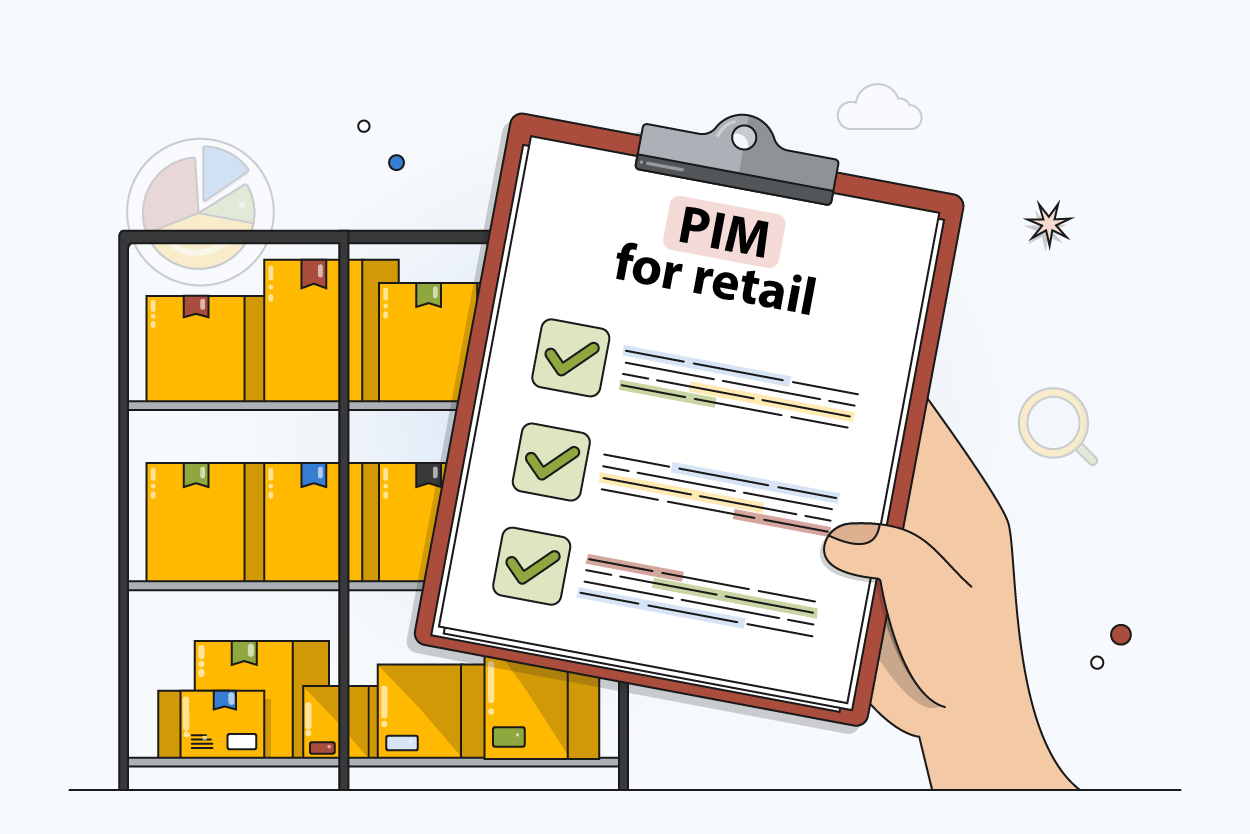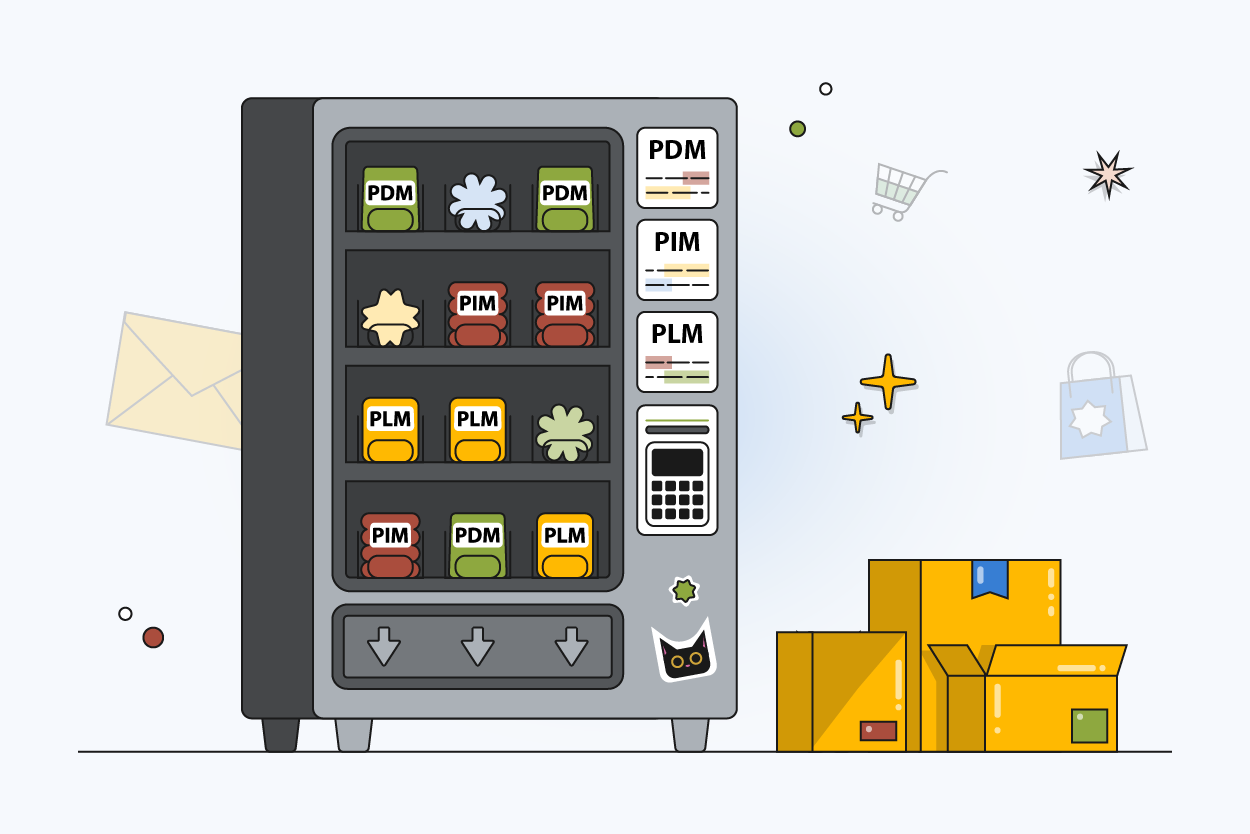Boosting eCommerce: Product Information Management Software
Author name: Mark Chickering

Your product manager just updated the price on your website. Two hours later, a customer calls: "Amazon shows a different price!" Meanwhile, your print catalog from last month lists yet another number. Three channels, three different prices for the same product.
Sound familiar? This chaos costs businesses millions in lost sales, customer trust, and operational headaches. Product Information Management (PIM) software solves this by creating a single source of truth for all product data across every channel.
In this guide, we'll explore what PIM software does, how it works, and why leading eCommerce brands consider it essential infrastructure—not optional software.
Table Of Contents:
- Understanding Product Information Management Software
- How Does Product Information Management Software Work?
- Key Features and Benefits of Product Information Management Software
- Implementing Product Information Management Software in Your Organization
- Enhancing Product Experiences with Product Information Management Software
- Top Product Information Management Software Solutions in the Market
- The Future of Product Information Management Software
- Conclusion
- FAQs in Relation to Product Information Management Software
Understanding Product Information Management Software
If you've ever been frustrated by inconsistent product information across different sales channels, or struggled with managing a myriad of digital assets, then it's time to explore the world of Product Information Management (PIM) systems. This game-changing tool can be your secret weapon for boosting brand reputation and enhancing customer experiences.
Defining PIM Software
PIM platform is like having a super-organized personal assistant dedicated to all things related to your products. It gives you an efficient way to centralize product data in one place - from detailed descriptions and pricing details, right down to high-quality images.
The convenience of this system is its simplicity. Once your product data is inputted into the SAP Commerce Cloud, it's easy as pie for anyone on your team —from marketing folks prepping campaigns, technical teams updating specs or even partners integrating their systems— to access accurate up-to-date information instantly.
Importance of PIM in Business Operations
A good PIM system doesn't just make life easier; it directly impacts business operations too. How? Well, consider that customers expect brands like yours not only deliver stellar products but also maintain consistent messages about them across various platforms – online stores, print catalogs and more.
This isn’t some fanciful wish either: Studies show businesses leveraging robust management solutions significantly streamline operations while improving overall customer experience. The key here?
- Data Quality.
In today’s digitally driven marketplaces such as Amazon or eBay where competition is fierce, you can’t afford any discrepancies between what's promised versus delivered. By ensuring consistency using advanced features offered by top-notch PIM software, you can confidently meet customer expectations head-on.
Whether you're looking to enhance your product experiences, improve data quality or streamline digital asset management - a flexible PIM platform like the one offered by PIMinto could be just what you need. Let's delve deeper into this concept and see how it can help your business grow.
Discover the Top 8 Benefits of PIM for eCommerce
See how leading online retailers use PIM to increase sales, reduce returns, and accelerate time-to-market with consistent product information across all channels.
How Does Product Information Management Software Work?
Product Information Management (PIM) systems function as a digital hub, managing all catalog data and digital assets in one central location. But how does it actually work? Let's dive into the nuts and bolts.
Exploring the Architecture of PIM Systems
The architecture of PIM systems, such as SAP Commerce Cloud, is built around a centralized repository. This is where all your product information lives - from technical specifications to marketing descriptions and digital assets.
PIM platforms collect, manage, and enrich this wealth of data within their framework. They can be integrated with existing IT landscapes for seamless operations between different departments or sales channels.
This single source approach makes sure that you always have accurate, up-to-date product information ready to share across multiple platforms including Amazon or any other distribution channel.
The key component here is consistency which improves customer experiences significantly by delivering uniform content everywhere. A solid PIM system also offers features for search engine optimization helping you make an impact on the digital shelf without needing separate SEO tools.
Precisely because they're designed with flexibility in mind these solutions are capable of handling changes easily whether they come from internal processes like new products launches or external ones such as evolving market trends making them an integral part of modern business operations.
Key Features Offered by PIM Systems | |
|---|---|
| Data Collection | Gather data from various sources. |
| Data Enrichment | Enhance it to improve its quality before publishing. |
| Digital Asset Integration | Effortlessly link digital assets like images, videos, or documents to your product data. |
| IT System Integration | Simple to connect with existing IT systems for seamless operations. |
| Data Export | Easily export and share data in different formats. |
Comprehensive view that enhances the product experience. This not only streamlines operations but also elevates customer satisfaction.
Product Information Management (PIM) software: Think of it as a digital librarian that stores and manages all your product data in one place. It collects, enriches, and shares accurate information across multiple platforms - boosting customer experience with consistent content. Plus, it's flexible enough to handle changes from new product launches or market trends. And don't forget: its dynamic nature lets you adapt quickly to the ever-changing business landscape.
Product Information Management Software Key Features and Benefits
PIM solutions come packed with features that let businesses optimize their product content and provide management solutions. A notable one is the centralized repository feature.
Centralized Repository Feature
A PIM system acts as a central repository, consolidating all your product details in one location. This enables you to maintain consistency across multiple channels, enhancing the overall customer experience.
Whether it's digital assets like images or essential details like product descriptions, having everything stored centrally gives a single source of truth. So when someone asks a question about any item, answers are quick to get and accurate.
This not only boosts efficiency but also helps ensure data governance by keeping an eye on the quality of your data management process.
- Easier search: With a central repository, finding specific information becomes less time-consuming. Whether you need to find technical specs or marketing copy – it’s all there in one place.
- Better coordination: All teams can access up-to-date information at any given moment leading to improved collaboration within organizations - no more hunting down colleagues for info.
- Data Integrity: Having just one location where data is updated ensures everyone uses current and correct details reducing chances of error significantly.
Stibo Systems' Product Master Data Management, a renowned PIM tool does this well; providing an interface designed around user needs.
With other useful features such as SEO optimization capabilities and easy integration with ERP systems (like SAP Commerce Cloud), using a PIM solution offers clear benefits. From helping businesses deliver consistent product experiences to providing a single view of products, these solutions can significantly impact your digital shelf presence.
While the initial setup might require some effort and resources (think data migration), it's worth it in the long run. Not only does PIM help sell products more effectively by ensuring accurate information but also streamlines processes like creating print catalogs or publishing on distribution channels including Amazon.
Don't forget, it's super important to pick a flexible PIM software that seamlessly integrates with your current system landscape.
PIM software is a game-changer, offering features like centralized repositories for all your product info. It ensures consistency across channels, which results in enhanced customer experiences and top-notch data governance. Plus, it simplifies the search process for specific information and bolsters team coordination by giving up-to-date details that can be accessed anytime, anywhere. And the best part? PIM tools even aid in optimizing SEO and seamlessly integrating with other systems.
Product Information Management Software in Your Organization
When you're ready to make the move and incorporate a PIM platform, there are several stages that must be followed. But don't worry, we've got your back.
The first step is data migration. This means moving all your product information from its current location into the new PIM platform. It might sound daunting, but it's essential for creating that single source of truth about each product.
This task needs careful planning and testing to make sure no valuable data gets lost or corrupted during transfer. In some cases, businesses opt for professional help at this stage to ensure smooth transition.
Next up is integration with existing IT systems such as ERP systems or Commerce Cloud platforms like SAP Commerce Cloud. The aim here is seamless flow of information between different software applications within an organization – yes, just like rivers flowing together to form one mighty stream. That way, updates made in one system reflect across others instantly maintaining consistency.
You'll also need strategies for change management since implementing new technology affects everyone - from top-level managers down to front-line staff who use these tools daily. This includes training sessions on how best to use the software features and ongoing support until everyone feels comfortable navigating their way around.
Last but not least comes measuring success: How well has the implementation gone? Have operations improved? Is customer experience better than before?
A good idea would be setting key performance indicators (KPIs) beforehand which could range from time saved per task through increased sales figures or improved customer satisfaction scores.
Remember folks; Rome wasn’t built in a day nor will perfect implementation happen overnight. It’s a journey that requires patience along with meticulous planning and execution. So take a deep breath and let's embark on this PIM journey together.
Ready to use a Product Information Management (PIM) tool? Start with data migration, moving all your product info into the new PIM platform. Then integrate it with existing IT systems for seamless information flow. Don't forget change management strategies and training for staff on how to use the software. Lastly, measure success using key performance indicators such as time saved per task or improvements in product data quality.
Product Information Management Software Enhances Product Experiences
When it comes to creating memorable product experiences, PIM software stands as a game-changer. To explore further, let's delve into how PIM enables consistent product experiences.
Role of PIM in Delivering Consistent Product Experiences
The key is consistency. Brands often grapple with delivering uniform information across various channels - from online marketplaces like Amazon to print catalogs and digital shelves on their websites. Here’s where a robust PIM solution, such as SAP Commerce Cloud, shines.
A central repository feature allows businesses to manage all their product content and digital assets under one roof. It not only ensures accurate data but also makes updating information easier than ever before, impacting product experience positively.
PIM solutions make it faster and easier to create compelling product experiences by offering a unified view of your products' lifecycle management process — starting right from sourcing raw materials till they reach the end customers via multiple distribution channels.
Beyond just managing static data, modern PIM tools play an instrumental role in shaping customer journeys through engaging storytelling around products that resonate at an emotional level with potential buyers – bringing life to otherwise dull SKU numbers or technical specifications.
- An intuitive user interface lets marketers optimize descriptions for search engine optimization without any need for coding knowledge.
- Incorporating social proof elements such as ratings & reviews can significantly boost conversion rates because customers trust other customers more than sales pitches.
With advanced features available today in leading platforms like PIMinto’s flexible PIM tool, there's no excuse left for brands not to deliver consistent and captivating experiences every single time.
Just remember: "A product is only as good as its story." So let's make sure your products tell an enchanting tale across all channels, turning casual browsers into loyal customers.
Product Information Management (PIM) software is a game-changer in crafting memorable product experiences. It delivers consistent, accurate information across various channels and makes updating data easier. By offering an all-encompassing view of the product lifecycle, it aids in creating compelling narratives that connect with customers emotionally. Features like SEO optimization and social proof integration further enhance conversions. With these tools at your disposal, you can elevate your brand's presence and boost sales performance effectively.
Top Product Information Management Software Solutions in the Market
Let's talk about some of the best PIM solutions out there. With these tools, you can manage your product data like a pro and enhance customer experiences.
PIMinto PIM
This solution is perfect if you need to get organized. This central source of truth offers integration with IT systems, has an easy to use Interface, advanced features and is a repository for all your product information and digital assets. The best part is you can use it for free. This includes free onboarding and user training.
Agility PIM
This solution may be a good fit for sume users. It offers centralized repository features for all product information and digital assets. They claim to make it easy to find what you're looking for quickly.
Contentserv Product Experience Platform
The Contentserv platform focuses on delivering consistent and engaging product experiences across multiple channels. The tool claims to integrate well with existing IT systems. If true then this makes it even more appealing.
Precisely EnterWorks
Precisely EnterWorks claim to allow businesses to streamline operations by offering effective management of their product data through its unique architecture.
IBM's InfoSphere Master Data Management
This robust system from IBM does not just help collect but also enriches your product information on your enterprise – an excellent choice for brands that value quality over quantity when it comes to data.
Pick Your PIM.
Remember, the right PIM software for you depends on your specific needs. Whether it's powerful, flexible, and easy to use like PIMinto PIM, or something like IBM's InfoSphere Master Data Management.
Consider what features are most important to you – centralized repository, digital asset management, integration with existing IT systems? Then pick the solution that checks those boxes.
Is PIM Right for Your Business?
Take our 2-minute assessment to discover if PIM will solve your product data challenges and see personalized recommendations based on your business profile.
- ✓ Identify your current data management pain points
- ✓ Get instant recommendations for your business size
- ✓ See which PIM features you actually need
- ✓ Compare solutions based on your requirements
The Future of Product Information Management Software
As we gaze into the future, it is evident that PIM software will remain a fundamental tool for companies. But how exactly is it going to evolve? Let's take a closer look.
Increased Focus on Experience Management
Firstly, there'll be more emphasis on product experience management. Customers expect consistency across multiple channels and engaging product descriptions are vital for this. Companies using PIMinto PIM can attest to its effectiveness in delivering consistent information.
This evolution aligns with the rising demand for digital shelf presence where products live virtually alongside customer experiences online. So companies need not only manage their master data but also optimize product presentation across various sales channels including Amazon and other distribution outlets.
Tighter Integration with Enterprise Resource Systems
PIM systems will become even more intertwined with enterprise resource planning (ERP) systems like SAP Commerce Cloud. This tighter integration helps maintain high-quality master data management by ensuring accurate info while enabling seamless operations between departments.
Incorporation of Advanced Technologies
New technologies such as AI will play an increased role in managing your unified product catalogue through intelligent search engine optimization techniques and user-friendly interfaces, making these tools more effective at publishing rich content from a central repository swiftly to multiple channels simultaneously.
The next-gen PIM platforms would also help brands better control their print catalogs, providing them flexibility when dealing with changes in their product lifecycle management strategy - thanks to sophisticated algorithms capable of predicting market trends before they happen.
SAP Commerce Cloud, along with other solutions like PIMinto PIM and Contentserv Product Experience Platform, are already making strides in this direction, providing robust experience management platforms that businesses can use to enhance their product marketing efforts.
As we move forward, expect to see more enterprises adopting advanced PIM systems. They're seeking that competitive edge, and it's clear that the future is digital.
Looking ahead, Product Information Management (PIM) software will put more focus on enhancing product experiences and integrating tighter with ERP systems. Expect advanced technologies like AI to boost their efficiency in managing product catalogs across multiple channels. Brands using solutions such as SAP Commerce Cloud, Agility PIM, and Contentserv are already benefiting from these upgrades.
Conclusion
Grasping the essence of Product Information Management Software is a game-changer. It's that trusty partner helping you manage your vast product library, making sure all tales are told right and consistently.
PIM isn't just about data management and asset management; it's also about enhancing customer experiences with engaging product narratives across multiple channels.
Dive into its architecture to appreciate how it functions. And remember, implementing PIM involves thoughtful consideration on data migration and measuring success afterwards.
Look out for features like centralized repositories when choosing your ideal PIM tool. The future looks promising as PIM continues to evolve in line with eCommerce needs!
Ready to Centralize Your Product Data?
See how PIMinto eliminates product information inconsistencies, speeds up publishing to all channels, and gives you complete control—with free onboarding and unlimited products included.
FAQs in Relation to Product Information Management Software
PIM software centralizes, organizes, and manages product data. It's crucial for businesses to streamline operations and offer consistent product experiences.
The "best" PIM solution varies based on your business needs. We believe PIMinto PIM is the most robust management solution and offers the best price point. Other solutions like SAP Commerce Cloud, Agility PIM, and Informatica MDM are a few reputable options.
An example of a robust PIM system would be IBM's InfoSphere Master Data Management. It helps manage complex product information across multiple channels as do other PIM solutions.
Retailers, manufacturers, eCommerce companies - basically any organization dealing with numerous products or SKUs use this type of software to manage their digital assets effectively.
Modified on: 2023-11-21



